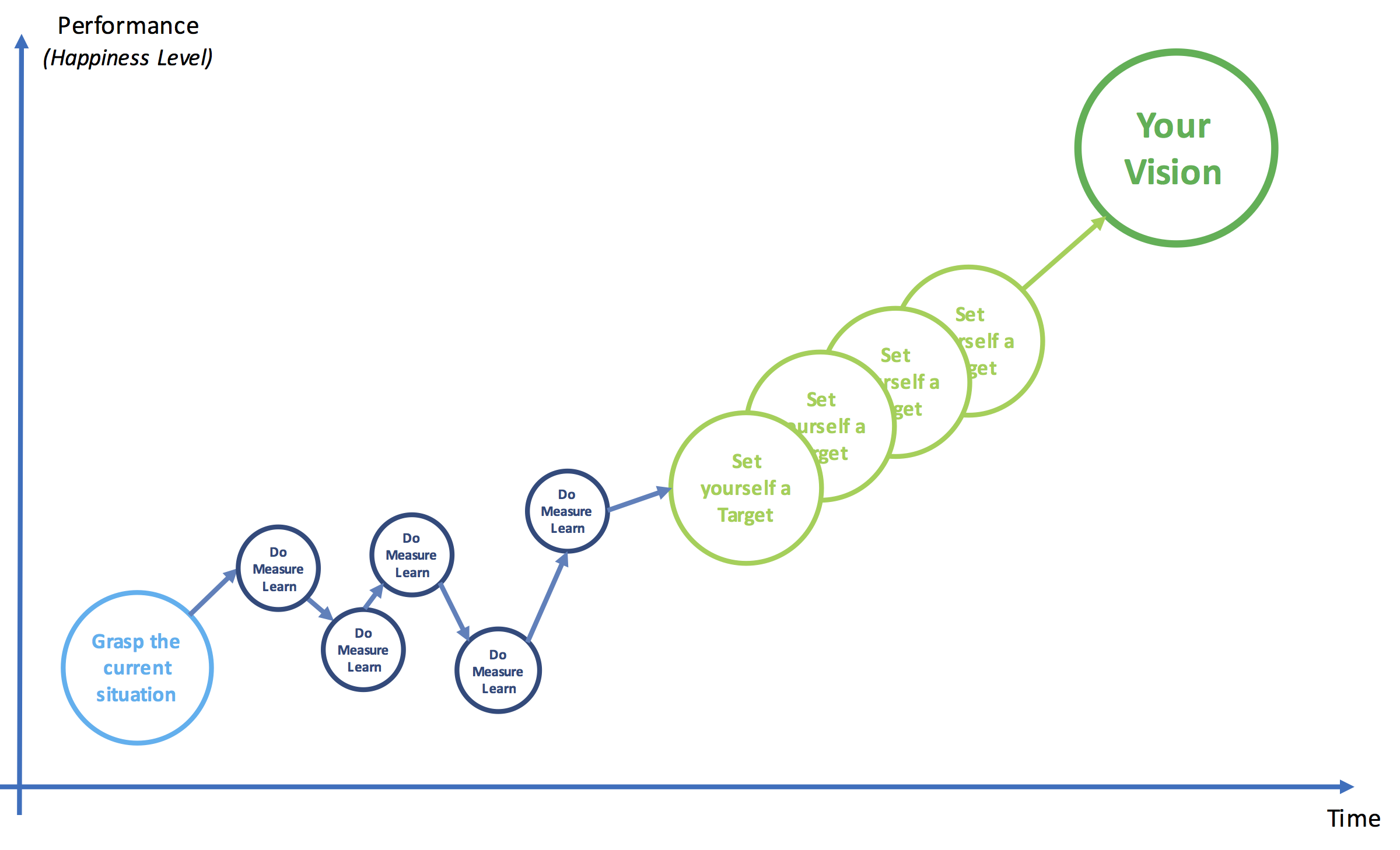How do you become better in a particular field as an individual? Let’s assume, you want to master an instrument, and your vision is to one day play a solo in the Elbphilharmoie in Hamburg. You will practise, focussing on different elements such as rhythm, the accuracy of pitch and length of the notes, endurance, and more. You might set yourself goals in these areas and try to achieve them. You will try different techniques to reach these goals, often with the help of a teacher or coach.
In general, this approach is about measuring your current performance, setting a goal of what you want to achieve, trying something to reach this goal, measure your distance from your goal, reflecting on how you do things and either continue or trying something different, something that you assume would be more effective or efficient until you have reached your goal. Then you will continue with the next goals in the same way until you have achieved your vision (Figure 1, see also Toyota Improvement Kata).

Do you apply the same technique in your team or group you belong to? Do you have a direction you want to go? A vision? How often do you reflect on your way of working on getting better or happier or simply, making life easier? There is an easy way of improvement as a team, the implementation of so-called Retrospectives.
Retrospectives are best known from Scrum, a de-facto framework for agile (product) development. Retrospectives are short facilitated visual workshops. They are often colourful and fun and focus on metaphors. I will shortly outline a common agenda (based on [amazon text=Agile Retrospectives: Making Good Teams Great by Esther Derby, Diana Larsen and Ken Schwaber&asin=0977616649]):
- Set the Stage. Set a direction, get a sense of the general mood, get the participants energised.
- Gather Data. Collect Data from the participants.
- Gather Insights. Discuss the data, look for connections and patterns.
- Decide What to Do. Decide on what to focus on, develop actions from the data.
- Close. Summarise and close the Retrospective.
As you can easily see, these Retrospectives are in no sense limited to Scrum or even Software Development. They are the basic and most essential step of a change initiative within any organisation. A team or group or department, basically people that work together on a common goal, come together periodically to reflect on a specified time period in the past or a special topic. It works in any kind of business. The participants look at what is working well, and what should be improved. These improvements focus on how to make their job easier, or more effective or efficient or happier.
A team experiences that it can change things by itself, without their superior. The team knows best on how to improve in their environment. This works best if people are allowed to perform changes. Hence, they should be equipped with decision-making power. To make this work, managers should gradually transfer power to the team, e.g. be using delegation poker. It is one step to self-organising teams.
To sum up, in Retrospectives people periodically come together, celebrate their successes and focus on how to work better by trying to do things differently or by testing new ways of doing things. It should be facilitated by someone neutral outside the team, so the team can mutually focus on improvement. It’s often a small change that makes people happier at work. Often these changes won’t cost a cent. So what is stopping you from running your first Retrospective?
(Title Image by AK Bijuraj / Doha Stadium Plus Qatar, Creative Commons 3.0)
- One year – Learning By Playing Meetup - 28/10/2018
- Impact Feedback - 13/03/2018
- T-Shaped Game – Consontants and Vowels - 24/01/2018
